NFC payments, or Near Field Communication payments, have greatly changed how customers pay for their purchases. Shoppers now just need to tap their NFC-enabled gadgets, like smartphones or smartwatches, onto compatible point of sale devices to complete payments in a few seconds.
With the number of NFC-supported smartphones projected to reach 97% this year and 99% by 2027, you can expect a dramatic rise in NFC payments globally. For example, swipe-to-pay transactions are estimated to triple in Europe this year compared to 2020. As customer preferences are constantly evolving, businesses should keep pace with these changes.
In this article, we’ll analyze the advantages and drawbacks of NFC payments and how to implement them in retail. Let’s scroll down for more.
What are NFC payments?
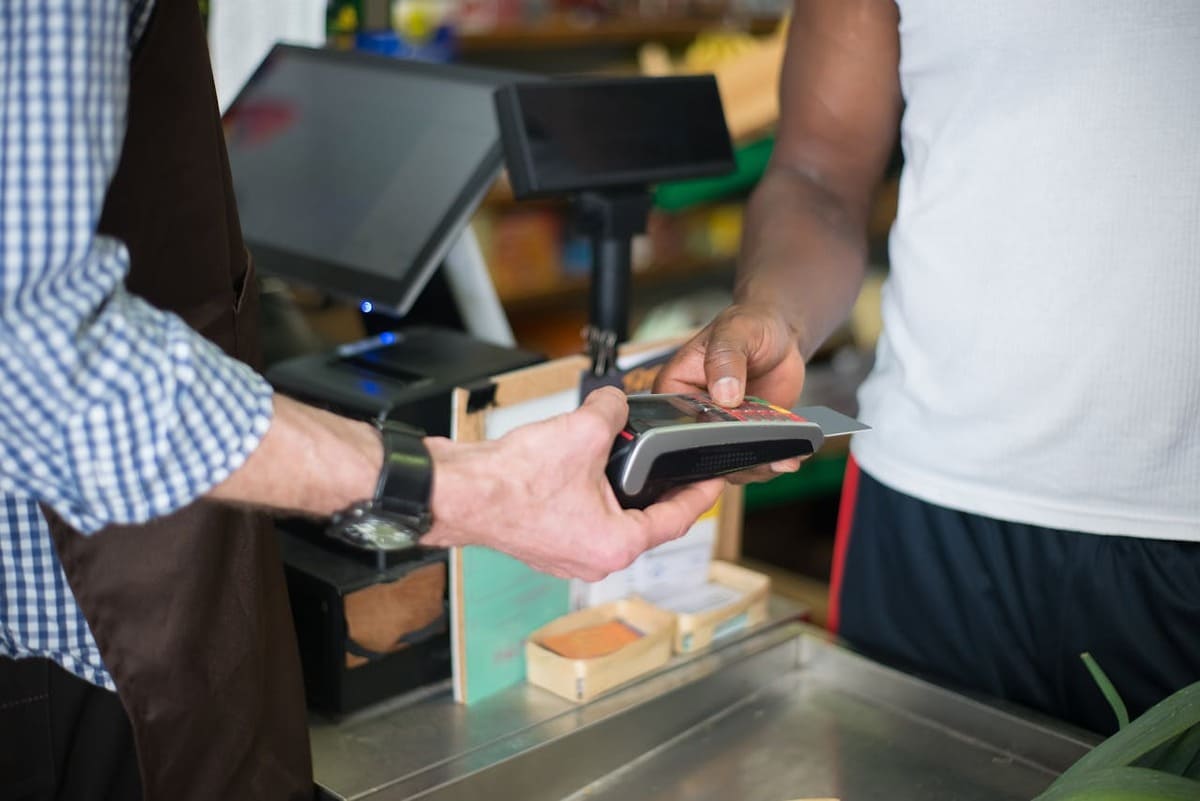
NFC payments are a fast and secure contactless payment that lets customers tap or wave their NFC-enabled credit or debit cards, smartphones, and wearables over a reader to pay at the store.
Key market players include Google Pay, Apple Pay, Visa Paywave, Mastercard Paypass, Samsung Pay, Venmo, etc.
How safe is NFC payment?
NFC payment methods are secure thanks to advanced encryption and tokenization techniques, which ensure payment details are never exposed directly by generating a unique token for each transaction.
The proximity is usually short (within a few centimeters) for NFC phone payments. Thus, shoppers have to bring their phones near the reader to initiate a transaction. This method also requires user authentication like biometrics or passcodes to further safeguard against fraud.
Let’s see how businesses of all stripes are offering NFC payments.
- Retail: Deliver low-friction transactions for customers at the point of sale
- Restaurant: Enable diners to settle the table or takeout bill instantly
- Grocery and convenience stores: Streamline the transaction for low-value purchases (snacks, drinks)
- Public transit: Enable NFC payments for automatic fare collection
- Ticketing kiosks: Provide a contactless opportunity to purchase tickets or passes
How does NFC payment work?
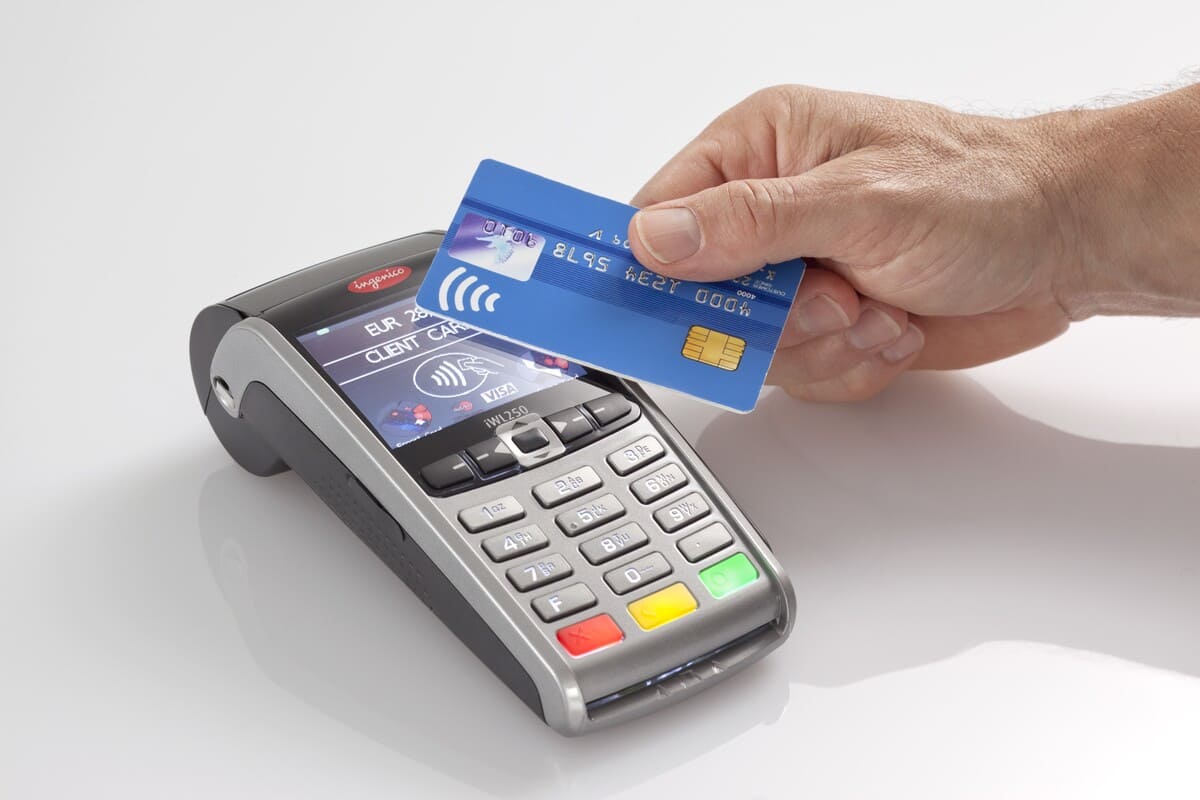
NFC functionality works thanks to a chip that runs on a specific RFID radio frequency of 13.56 MHz, allowing short-range communication between devices. In fact, NFC’s proximity is about 0 to 5 cm. When customers bring their cards or phones close to the reader for an NFC payment, these devices start communicating with each other to securely transfer customer payment data.
Mobile payment NFC technology works in three modes:
- Card emulation: In this case, the NFC device acts as a contactless card. This includes various applications such as payment, ticketing, and access control.
- Reader or writer: In this mode, NFC phones can read tags. Users can interact with posters, launch mobile internet content, send SMS messages, or make calls.
- Peer-to-peer: This mode enables data exchange between NFC devices. This functionality helps establish Bluetooth connections and exchange business cards.
Pros and cons of NFC payments
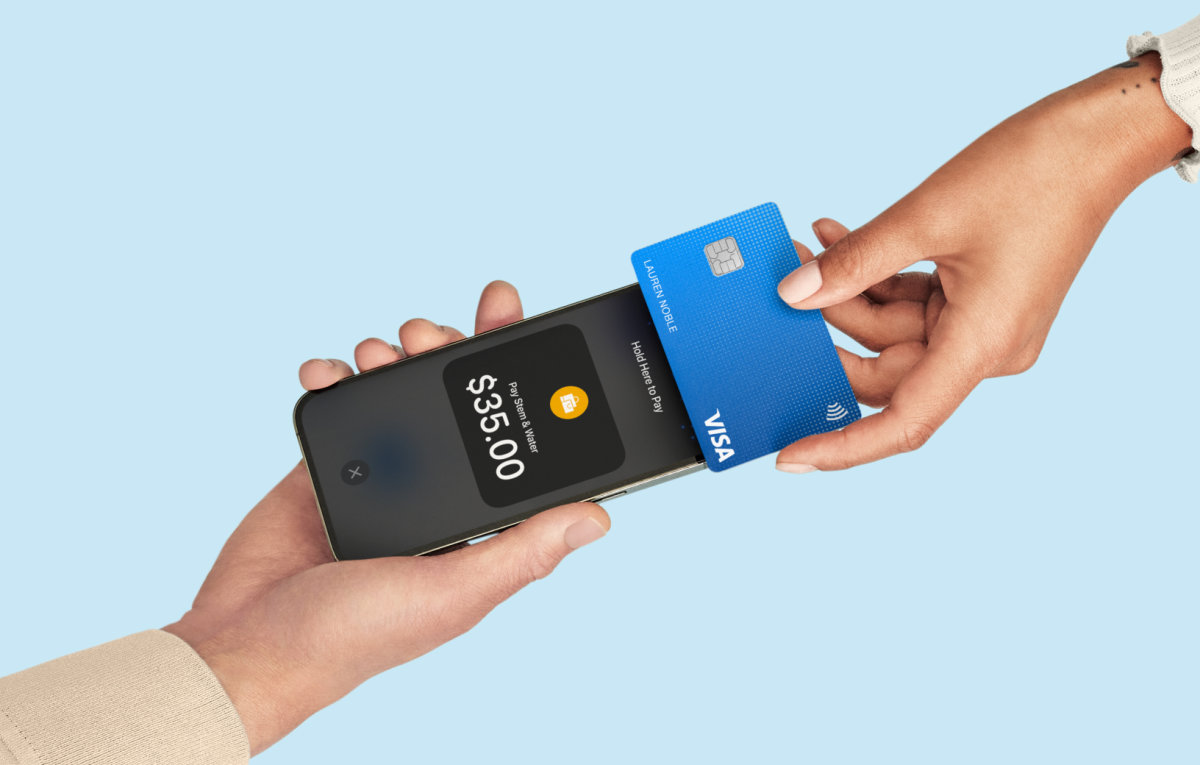
Providing contactless payment NFC has multiple benefits for your enterprise:
- Speedier checkout: NFC payments are speedy and efficient as they involve only a tap or wave of the customer’s card or mobile device. Customers are happier when they don’t have to wait as long.
- Tighter security: With NFC, customers’ data is secured through encryption and tokenization, thus lowering the fraud risks in your company.
- More convenience: Customers can pay with their smartphones or wearables instead of cards.
- Increase in sales: Thanks to its ease and speed, 87% of shoppers prefer contactless payment options for in-store shopping. Thus, offering NFC payments encourages customers to make more impulse purchases and become regulars. This NFC payment trend is especially prevalent in industries such as food and beverage, retail, and entertainment.
- Less cash handling: By employing NFC-based payment technology, you reduce the need for cash handling which is often time-consuming and exposes businesses to theft or losses.
But some shortcomings also exist:
- Initial costs: You’ll need to invest upfront in hardware and software to set up NFC payments.
- Hardware may include NFC-enabled payment terminals, standalone NFC readers, receipt printers, and mobile devices (such as iPads or Android tablets). Hardware costs can range from $400–2,500, depending on your location and vendors.
- Software costs for POS software and payment gateway fees can amount from $300–600/month.
- Thus, the total estimated costs can range from $700–3,100.
- Third-party reliance: Relying on technology from other NFC payment providers could bring reliability and compatibility issues:
- Disruptions: Sometimes, the process might stop working, potentially reducing sales and eroding customer trust in merchants.
- Varied standards: Different NFC payment companies may operate differently, making it hard to ensure seamless compatibility between all phones and payment devices. This can frustrate you and your shoppers.
- Fraud risks: These transactions are safe, but they’re still prone to fraud activities, namely:
- Fake cards: Your customers may use counterfeit cards, leading to chargebacks on your side.
- Customer’s phones lost: If clients misplace their phones, someone else could exploit them for purchases at your premises. This makes it hard for you to verify if the actual owner is making purchases.
- Hacked phones: Bad software on consumers’ mobiles or fake websites they surf may cause false payments in your store. This can become problematic in the long run.
- Scammed customers: Thieves might deceive customers into releasing their payment information, resulting in disputed charges and unhappy experiences.
- Adoption challenges: Insecurities and lack of knowledge about this technology may hinder some shoppers from using it.
How do customers pay with NFC?
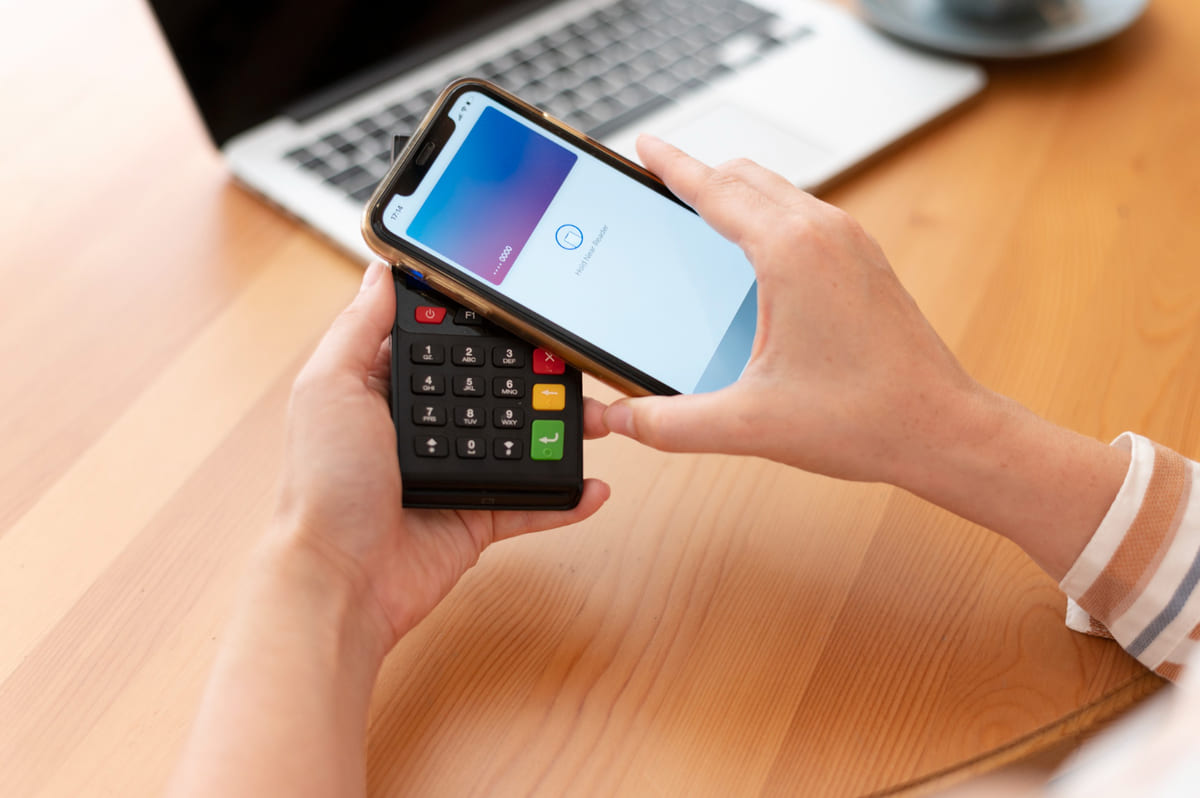
Customers have two NFC payment options to make a purchase, as follows:
Tap to pay
- Customers will need an NFC-enabled credit or debit card from their bank.
- At the point of sale, customers only need to tap or swipe the card onto the NFC payment terminal (usually within a few centimeters) and complete NFC card payments.
Pay with mobile wallets
- Customers will need NFC-enabled smartphones, smartwatches, or other NFC mobile devices.
- They install a mobile wallet app like Apple Pay, Google Pay, or Samsung Pay to store their payment card details.
- Customers bring their mobile devices close to the terminal (usually within a few centimeters) and lightly tap them on the terminal without opening the wallet app.
Both ways have the same confirmation process:
- The NFC technology establishes a secure connection and transmits payment data from the terminal to the payment processor for authorization.
- The terminal confirms the payment and the customer receives a notification on their device.
- After the transaction is complete, the customer receives their purchases.
If your customers don’t know how to enable NFC-based mobile payments on their devices, you should be available to help them out.
How do merchants accept NFC mobile payments?
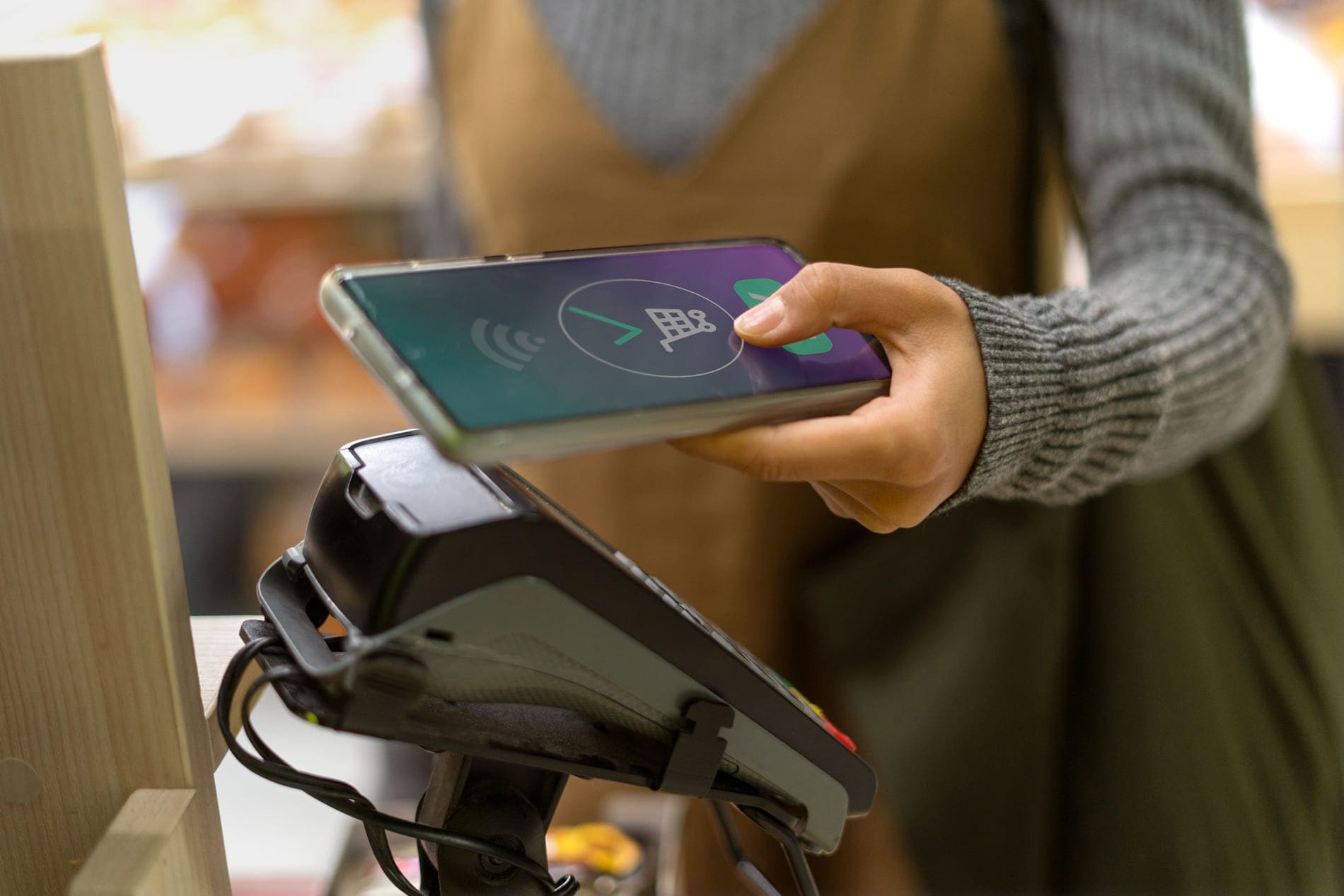
Here’s a step-by-step process for you to accept NFC mobile payments in-store:
- You’ll need an NFC-enabled POS terminal that works well with various NFC payment methods.
- Cashiers present the payment amount to the customer on the terminal screen for them to verify.
- When your customers approve the payment, and your terminal confirms it, you’ll get your money.
Now you know how to use NFC payments in your physical stores. To take your NFC payment acceptance to the next level, think about integrating retail POS software like Magestore POS into your payment system. Their eCommerce POS solutions with Magento POS and Shopify POS help streamline your payment process with these features:
- Hardware compatibility: Magestore POS seamlessly integrates with various hardware, including NFC-enabled devices.
- Easy to connect with multiple payment processors: With Magestore, you can flexibly provide favorable payment processors for your customers.
- Diverse payment methods: Going beyond NFC payments, Magestore supports various payment methods, such as cash, store credits, gift cards, split payments, and BNPL.
By adopting mobile payment NFC technology alongside potent POS systems, you can develop a contemporary, efficient, and customer-driven checkout experience that distinguishes you from the competition in today’s retail landscape.
Top 5 NFC payment apps
Here’s a comparison of 5 popular NFC payment apps and their key features:
App | Best for | Key benefits | NFC reader cost | Processing fee |
Apple Pay | iOS users |
| Included | Depend on your payment processors |
Google Pay | NFC payment Android users |
| Included | Depend on your payment processors |
Samsung Pay | Samsung device owners |
| Included | Depend on your payment processors |
PayPal | Online and in-store payments |
| $29 for the first one, Additional card readers $79 each | 2.29%+ $0.09 per transaction |
Square | Small businesses |
| $59 for contactless and chip reader (2nd generation) | 2.6% + $0.10 per transaction |
NFC vs. QR code payment
Let’s compare NFC and QR codes for mobile payments:
Aspects | NFC | QR code |
Technology | Short-range wireless communication | Two-dimensional barcode |
Speed | Very fast, just tap and go | Slightly slower due to the scanning process |
Device compatibility | Require devices with NFC capabilities | Any smartphone with a camera can scan QR codes. |
Costs | Higher due to specialized hardware | Lower because of the widespread scanning compatibility of smartphones |
Security | Built-in encryption capabilities | Generally secure, but less robust than NFC |
In short, NFC based payments are faster and safer but have lower accessibility and higher costs. QR code scanning offers a viable contactless payment without NFC solution. It’s more popular and cheaper but can be slower and less secure. With these factors in mind, you can find the most suitable contactless payment method for your business.
NFC vs. RFID
Aspects | NFC | RFID (Radio Frequency Identification) |
Communication range | Short-range (a few centimeters) | Longer than NFC, normally within 100 meters |
Communication type | Two-way communication can act as both reader and tag | In one-way communication, tags only send data to readers |
Frequency | High frequency (13.56 MHz) band | Low, high, or ultra-high frequency bands |
Security | Higher thanks to the shorter range and two-way communication | Lower security, easier for data to be intercepted |
Costs | Lower, can be implemented on smartphones | Higher, require dedicated reader hardware |
Data transfer rate | 106 kbps to 424 kbps | Vary, based on frequency, up to 640 kbps |
In summary, NFC has a shorter communication range but higher security and two-way communication capabilities compared to RFID technology. NFC is more commonly used for contactless payments and user-interactive applications, while RFID is better suited for long-range asset tracking and inventory management. The choice between NFC and RFID depends on your specific business needs and use cases. You should analyze the pros and cons of both technologies before deciding what’s best for your operation.
Conclusion
NFC contactless payments have changed the way people do business with their speed, security, and ease of use. NFC technology makes it possible to pay for things with just a tap or wave. This speeds up the checkout process, delights customers, and opens the door to more sales. As customers’ needs for fast and safe payments grow, companies that use NFC payment solutions will be able to meet customers’ changing needs and thrive in a market that’s becoming more competitive.
FAQs
1. Is NFC payment safe?
Yes. NFC payment helps minimize fraud risks using robust security features such as encryption and tokenization. So, you can rest assured with retail NFC payment security.
2. Does NFC payment work without the Internet?
Yes, NFC wireless payments can work without an active Internet connection. This results in faster transactions and removes reliance on network availability.
3. Is Apple Pay an NFC mobile payment?
Yes, Apple Pay is indeed an NFC mobile payment service. Retailers with NFC-enabled terminals can automatically accept Apple Pay.
4. Where is NFC on my phone?
Here’s how to find it:
- Android phones: Open Settings and search for “NFC”. You’ll find NFC results if your phone supports it. Then, you can turn it on for making contactless payments.
- iPhones: Open Control Center and you’ll see the NFC tag reader there.
5. Do I need NFC for contactless payments?
Yes, you and your customers need NFC to make contactless payments. It’s a technology allowing two NFC-enabled devices to communicate over a short distance and process transactions.
6. Are there any mobile payment apps without NFC?
Yes, many mobile payment apps such as WeChat Pay and Alipay work without NFC. These apps usually use QR codes for transactions, making them handy even on older devices or in areas where NFC is uncommon.
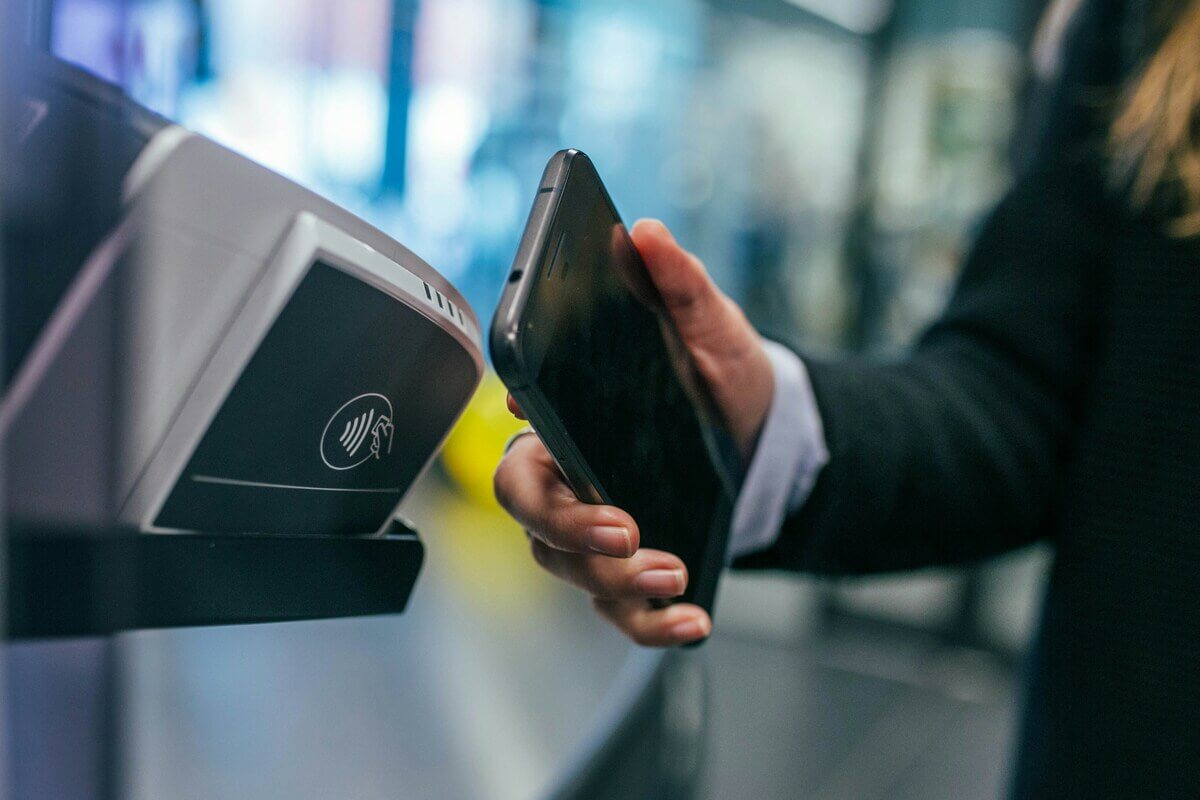






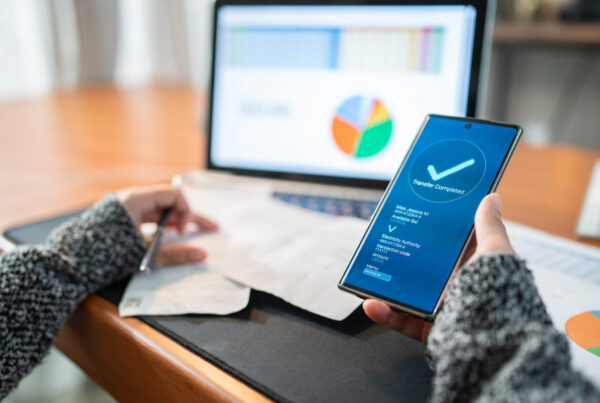



Thank you for this informative article on NFC payments! It provides a clear and concise explanation of what NFC payments are and the steps businesses can take to accept them. As contactless payments become more popular, understanding how this technology works is crucial for staying competitive. Your breakdown of the benefits, security features, and implementation process is especially helpful for business owners looking to modernize their payment systems. Great job on covering all the essential points!